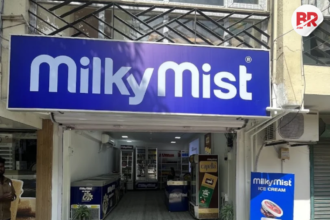
Nestlé India’s Q4 results reveal a mixed performance. The company reported a net profit of ₹885.4 crore for the January-March quarter, which aligns with analyst expectations but marks a 5% dip from the previous year. While this decrease in profits might raise a few eyebrows, there’s a bright spot: the volume growth.
This indicates that consumers are still buying Nestlé products despite the challenges faced by the company. Let’s break it down to understand what’s driving these trends.

The Numbers at a Glance
For the fourth quarter, Nestlé India’s net profit of ₹885.4 crore reflects a slight dip compared to last year. While it’s generally in line with predictions, the drop still raises questions. Is the dip in profits temporary, or is it a sign of deeper market trends? Let’s explore.
Volume Growth: A Ray of Hope?
Despite the dip in profits, the company’s volume growth is a sign that consumers are still reaching for their products. This could mean that even in tough times, people are opting for familiar brands.
What’s more, volume growth suggests a recovery in consumer demand, especially in light of the inflationary pressures and economic uncertainties that have affected consumer spending across the country.
Several factors might explain this growth:
- Rural market penetration: Nestlé may be expanding its reach to more rural areas, where demand for branded products is rising.
- Product innovation: New product launches, especially those catering to evolving tastes, could be bringing in fresh customers.
- Effective marketing: Strong promotional campaigns can boost the visibility and demand for existing products.
- Pricing strategies: Adjusting prices to stay competitive could be helping Nestlé sell more products without alienating consumers.
Also read Rallis India Tanks 4.53% After Q4 Shocker—Are Farmers or Investors Feeling the Heat More?
Why Did Profits Take a Hit?
So, if demand is recovering, why did profits fall? A few factors could explain this paradox:
- Rising input costs: Raw materials and packaging costs have surged, squeezing profit margins.
- Inflation: While consumers are buying more, they might be doing so more cautiously, and Nestlé could be absorbing some of the rising costs to maintain competitiveness.
- Increased competition: The FMCG sector is highly competitive. Nestlé faces pressure not only from established players but also from new entrants in the market.
- Higher marketing and promotional spend: In a bid to boost sales, Nestlé might be investing more in advertising and promotions, which can impact profitability in the short term.
What’s Next for Nestlé India?
Looking ahead, Nestlé India needs to focus on balancing demand recovery with cost management. Here are a few strategies they might employ:
- Supply chain optimization: Enhancing supply chain efficiency could help reduce costs and improve margins.
- Premiumization: Offering higher-value products could be a way to improve profitability without increasing volume.
- Strategic pricing: Finding a balance between staying competitive and maintaining healthy profit margins is crucial.
- Innovation: Continuing to develop products that meet changing consumer preferences will be key to sustained growth.
Also Read Havells India Q4 Profit Soars 16%—But There’s a Surprising Twist You Didn’t Expect!
Navigating Challenges with Optimism
Nestlé India’s Q4 results paint a picture of a company facing challenges but also showing signs of resilience. While profit dips are never ideal, the recovery in demand and volume growth offers a glimmer of hope.
With the right strategies in place, Nestlé could continue to ride the wave of recovery while managing its costs and staying ahead of the competition.
The coming quarters will be crucial. Will Nestlé be able to maintain its volume growth and profitability? Only time will tell. But for now, the signs are promising, and the company is still positioned as a leader in the Indian FMCG market.
Also Read HCL Tech Q4 PAT Slips 6.2%, But $3B Deal Surge Signals Bigger Game Ahead












